-
Administrator

Article: Holiday Snaps - Part 3
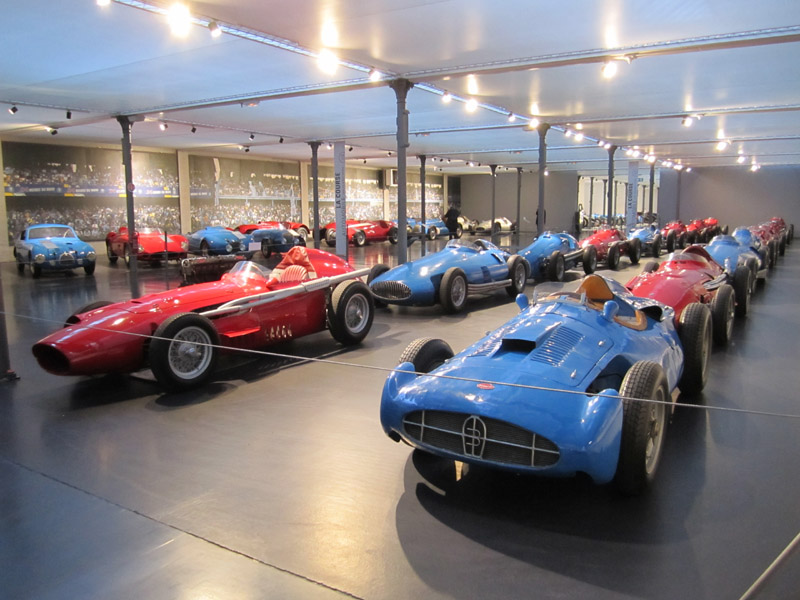
When I was a teenager, back in the late 1980s, I somehow ended up with a British classic car magazine that featured a story on an incredible vintage car collection in France, featuring the largest fleet of Bugatti's in the world, including two of the six Royales.
The collection itself was of huge interest to me, even then. But the story behind it somehow made it even more fascinating, and since reading that article, it has been one of my life goals to view this collection in person.
The story of the Schlumpf brothers is quite amazing. If you don't know what I'm talking about, I highly recommend you do a search. It’s a fascinating story.
Hans and Fritz Schlumpf were Swiss citizens who were born in Italy, but moved to the city of Mulhouse in France, when their mother was widowed. In the mid-1930s, the brothers established a company producing spun wool products. Following WW2, they rapidly grew the business, and soon became quite wealthy. Frtz, the younger of the two, had a love for engineering, and as such, also had a love for Bugatti cars. He'd wanted to own one since childhood. Just before the Nazi's invaded France, he purchased his first Bugatti, a 1929 Type 35B.
Following the war, Fritz began racing his Type 35B, until he was urged by his staff to stop racing, due to the dangers involved. The two brothers were quite different; Hans was something of a tyrant towards his staff, while Fritz had a great respect for them, and in return, initially, at least.
In the 1950s, the Schlumpf brothers began collecting Bugatti cars in earnest. In addition, they also bought entire car collections, largely to get the Bugatti’s in those collections. Because of this, they soon amassed a wide variety of very high-end marques, including Ferrari, Rolls-Royce, Hispano-Suiza etc. But Bugatti was what they fixated on. In 1962 alone, they purchased nearly 50 Bugatti's, and by 1967, owned 105 examples of the marque.
By now, their business had grown to an epic scale, and they employed a large workforce and several factories. In secret, they closed off a section of their 19,000 square meter factory building in Mulhouse, which they'd purchased in the 1950s, and used it to house and restore vehicles from their collection, which by this stage numbered nearly 400. They employed a large team of specialists to restore the cars, but the workers did so under a confidentiality agreement. They built a special display area featuring gravel floors and red tile walkway. By now, the Schlumpf collection had become an obsession.
Amazingly, although there were quite a few people who knew about the collection, including those from various Bugatti car clubs around the world, very few had actually seen it.
By the late 1960s, the textile market had changed, and a lot of the manufacturing work was now being done in Asia, and as such, the Schlumpf brothers business was suffering. This downward slide continued into the 1970s, and soon the Schlumpf’s began selling their factories. In late 1976, they closed their Malmerspach plant, laying off the workers as they did so. This prompted a workers strike, and soon riots began, requiring the intervention of over 400 police from ransacking the Mulhouse factory, where the brothers based themselves.
-
Administrator

In March 1977, during a union activists sit-in strike at the Mulhouse offices, workers broke into the factory, and it was here they discovered the collection, which by now was at over 600 cars. They set an Austin 7 on fire, and it was at this point the brothers fled across the border to Switzerland. With money owed to workers, and accusations of tax evasion, the Schlumpf’s never returned, and their Mulhouse factory, with their car collection, was occupied for the next two years by the textile-union. To recoup moneys owed, the union opened up the museum to the public, and more than 800,000 people visited in just two years.
However, with increasing debt, the brothers many creditors, including the French government, began looking to the collection to recoup their losses. It was at this stage it came close to being broken up. Fortunately, the collection (and building where it was housed) was classified in 1978 as a French Historic Monument by Council of State. A year later, a bankruptcy liquidator ordered the building be closed.
In 1981, the collection, including the buildings, were sold to the National Automobile Museum Association, who opened its doors once again in 1982. In 1999, as the condition of the collection fell into decline, Culturespace was contracted to take it over, run it, and modernize various sections to give it wider appeal, and to generate other sources of income. In March 2000, it was re-opened as the largest automobile museum in the world.
In 1981, Fritz Schlumpf filed a lawsuit from Switzerland claiming he was owed a portion of the sale price. Eventually, in 1999, a French court found in his favour. Although he had died in 1992 (Hans Schlumpf died in 1989), his widow was paid a large sum by the French government, while 62 of the cars were also returned. Following her death in 2008, many of these cars ended up in the Mullin Automotive Museum in Oxnard, California.
Over the years, the Mulhouse collection has had a few make-overs, and is now listed as a National Heritage site. The collection is now at 520 vehicles, with around 400 on display at any one time, while the old restoration shop also currently being resurrected.
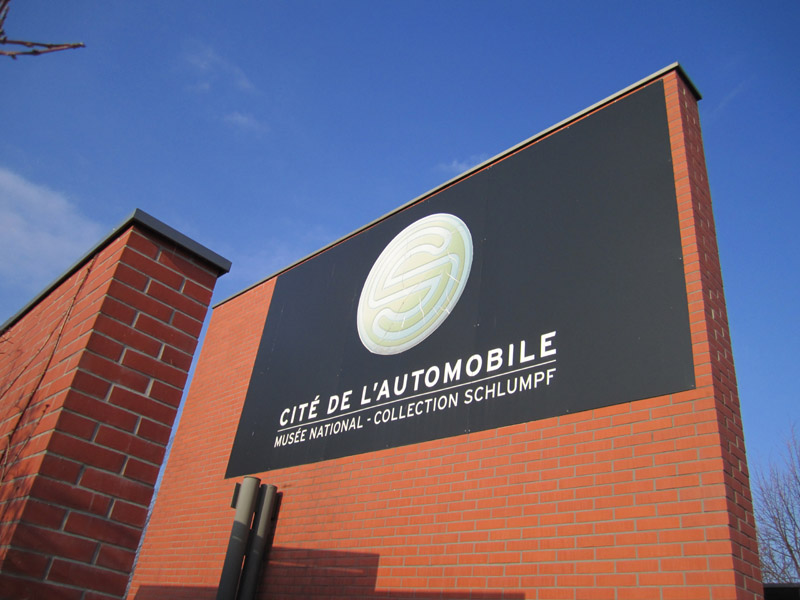
For me, more than 25 years after reading that classic car magazine article, I finally got the chance to visit the Schlumpf collection, or Cite de l'Automobile, as it is officially called. I spent more than three hours there, and these are the photos I took. And I have to say, it was quite an overwhelming experience, not only because I finally got to tick off a long-term goal I’ve had since I was a teenager, but because the museum, the layout, and the collection itself, are simply incredible. I will definitely return.
-
Administrator

This is the view walking up towards the museum entrance. At left is part of the old Schlumpf brothers textile factory.
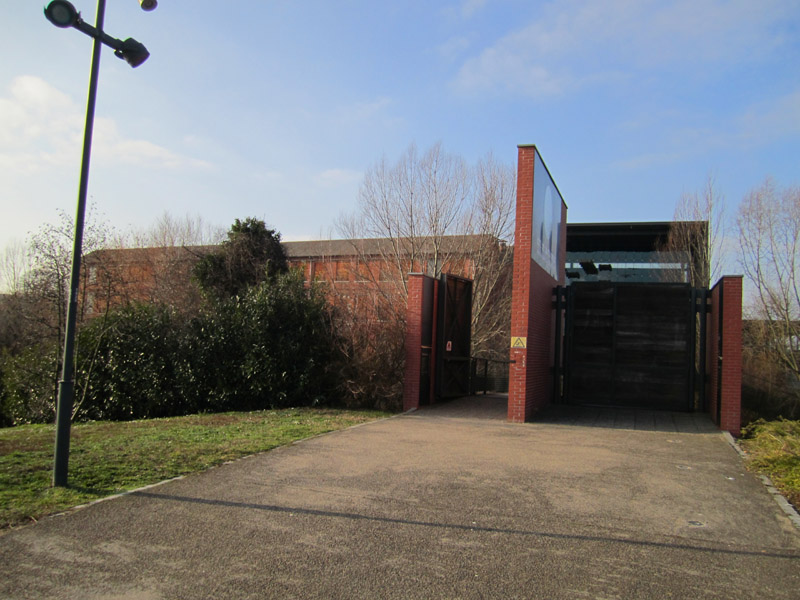
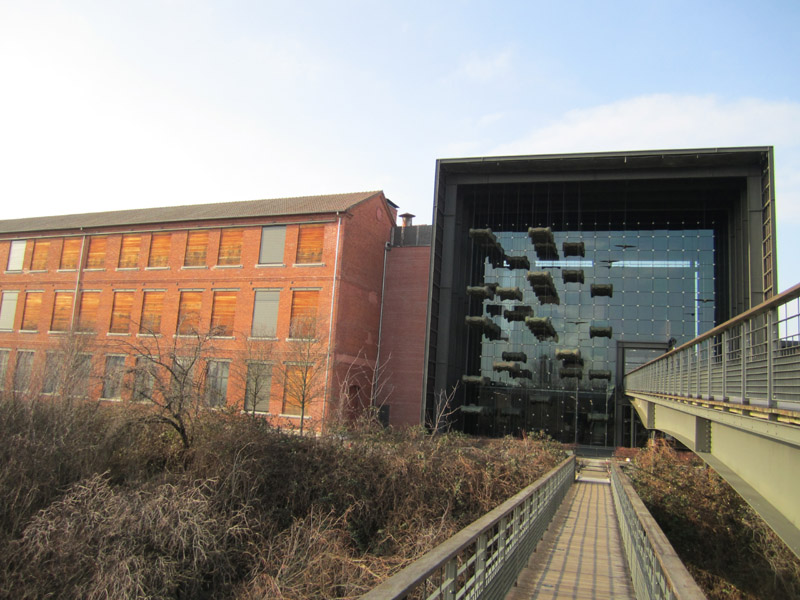
-
Administrator

The entrance features this amazing art piece (for want of a better term), in which the middle cars are actually spliced through the middle, separated by the huge glass window, with the front of the cars outside, and the rear inside.
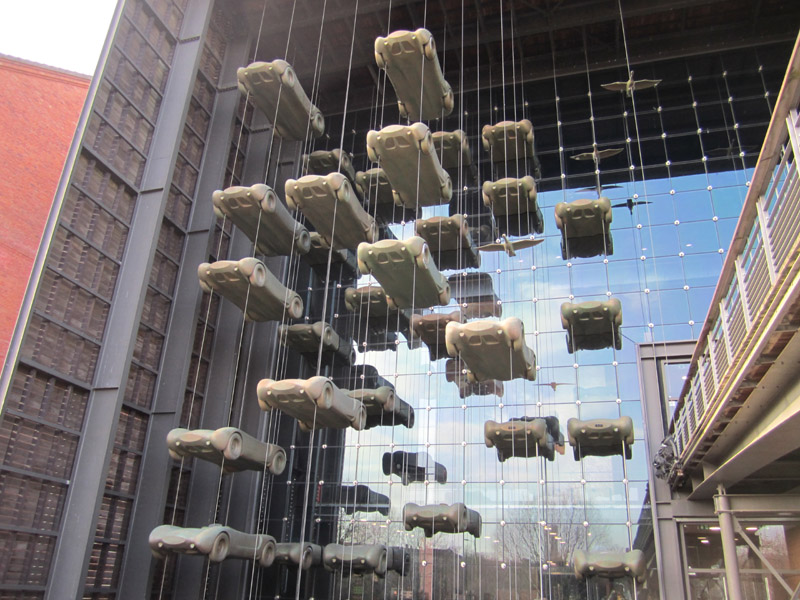
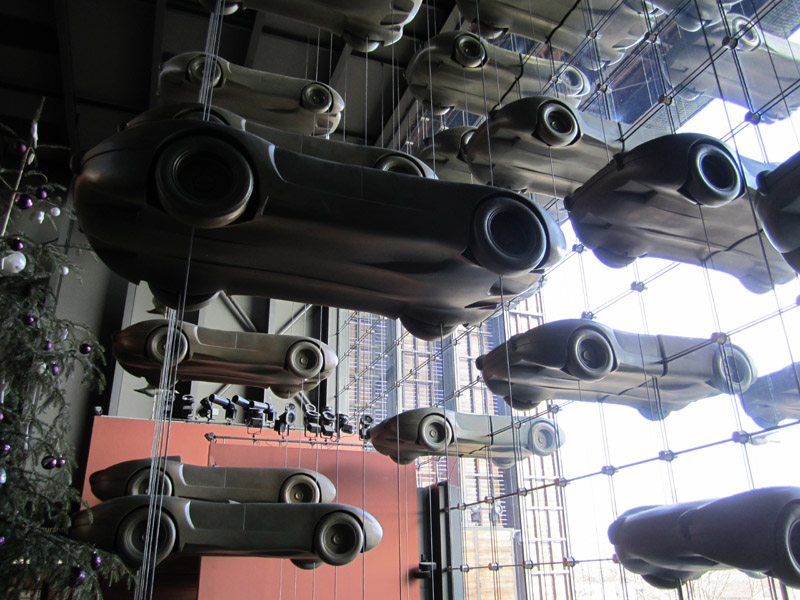
-
Administrator

When you enter, you walk down a long dark corridor which has the effect of actually heightening the anticipation. Beyond that is another corridor, featuring artwork on the walls. At the end is a first glimpse of what is the follow.
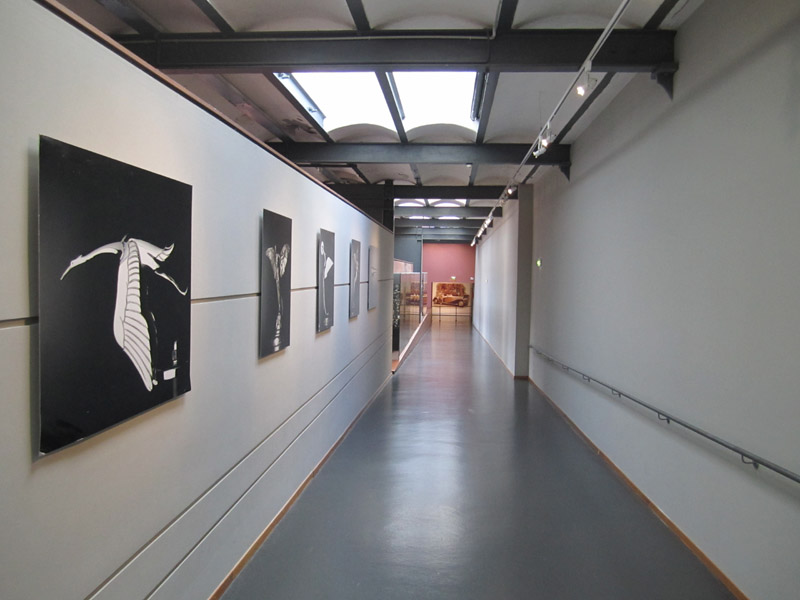
-
Administrator

And here it is. The first car that greets you, after a bit of a walk, is this magnificent replica of the Esders Royale.
As mentioned above, there were only ever seven Type 41 Royale's built, although Ettore Bugatti originally planed to build 25 of them. Featuring a 12.7 litre straight-8 engine, with 4.3 meter wheelbase, and measuring 6.4 meters overall, the Royale's were intended to be the most luxurious cars ever built. Bugatti was expecting all 25 cars to be snapped up by royalty and the uber-rich, but during a six year span, only three found buyers, and only seven were ever made. But this isn't one of them.
This car was commissioned by the Schlumpf brothers as a replica of Royale chassis 41111, the second Type 41 built, and the first to find a buyer. 41111 was originally sold to French textile tycoon Armand Esders, and fitted with a beautiful sweeping roadster body. It was known as the Royale Esders Roadster.
41111 still exists, but not in its original form. Its second owner was a French politician, who had it re-bodied as a Coupe de ville.
This car, the Schlumpf replica, was built using many original Bugatti parts from their huge stockpile. Its hard to explain just how impressive it is in person. And for sure, photos don't do it justice.
The Esders replica was housed in a small-ish room that worked as a partition between the long entrance hallway, and the main museum.
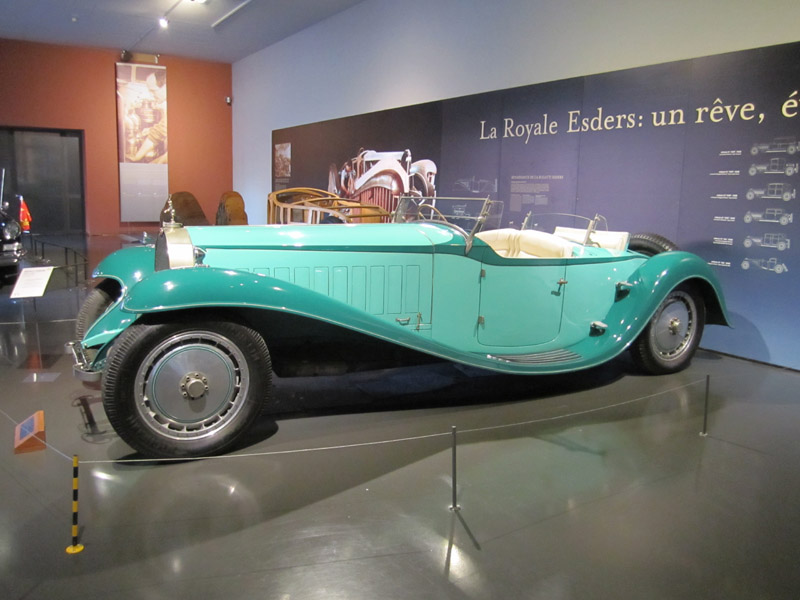
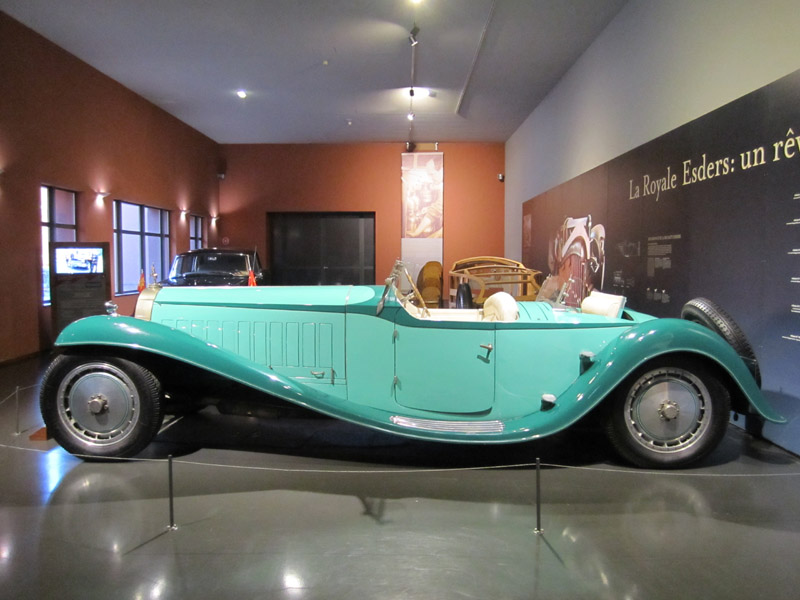
-
Administrator

-
Administrator

Continuing on, the walkway finally reaches the entrance for the main museum, where a couple of very early veteran vehicles are displayed.
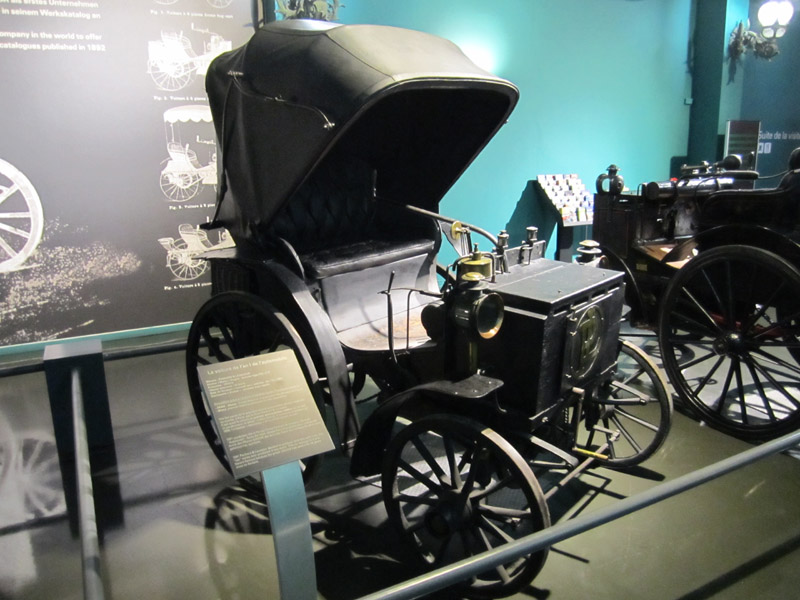
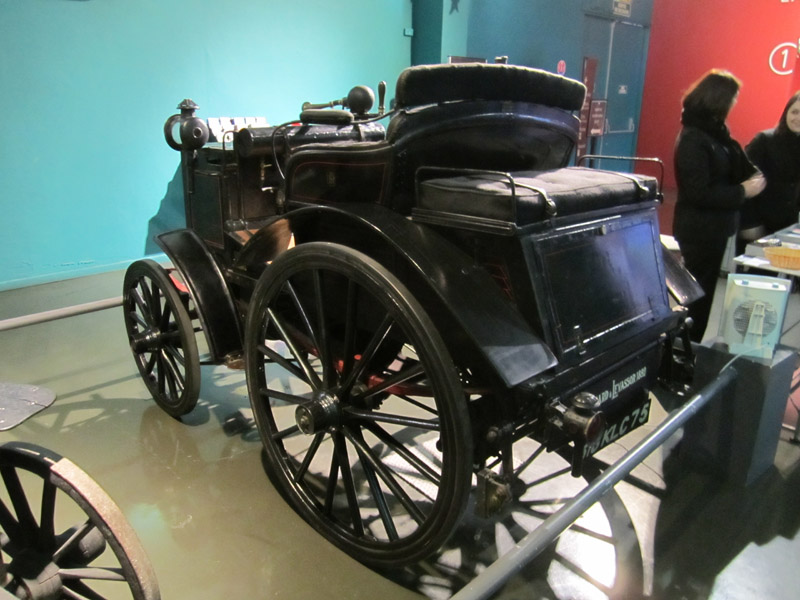
-
Administrator

And here it is. The opening for what lays ahead, and for me, the moment where I finally get to venture into this incredible space that I read about in that magazine all those years ago.
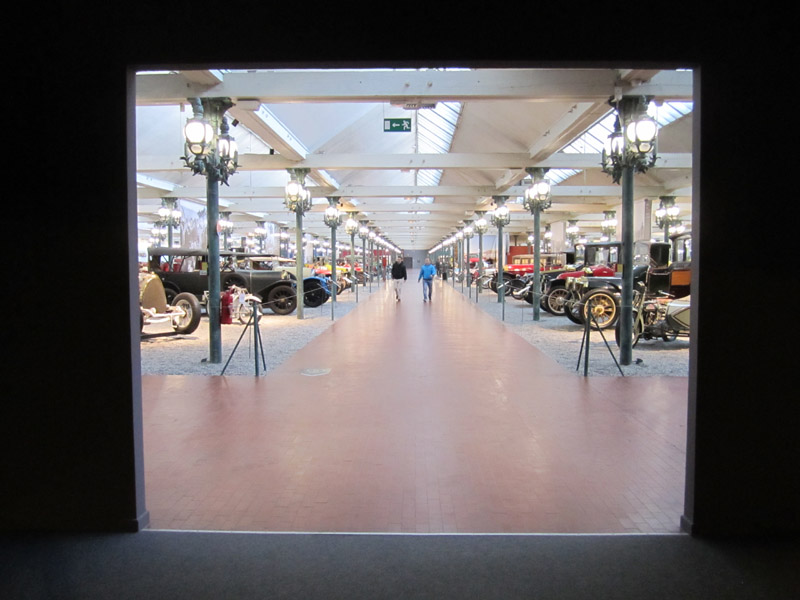
-
Administrator

OK, so, first things first. This place is absolutely huge! Its even bigger than I was anticipating. And I was anticipating it to be big. The building is much as it was when the Schlumpf brothers were creating it as their own private folly. The red tiled floor is still in place, as are the gravel rows on which the cars are displayed. And, there are several rows, each being, at a rough guess, 100 meters long. Adding to the opulence are the endless number of magnificent Pont Alexander III lamp posts.
The entrance, as pictured above, actually leads out into the center of the main hall. But I didn't want to just dive straight in. As, to the left on entrance, is a small room that I was drawn to, which is something of a shrine to Fritz Schlumpf.
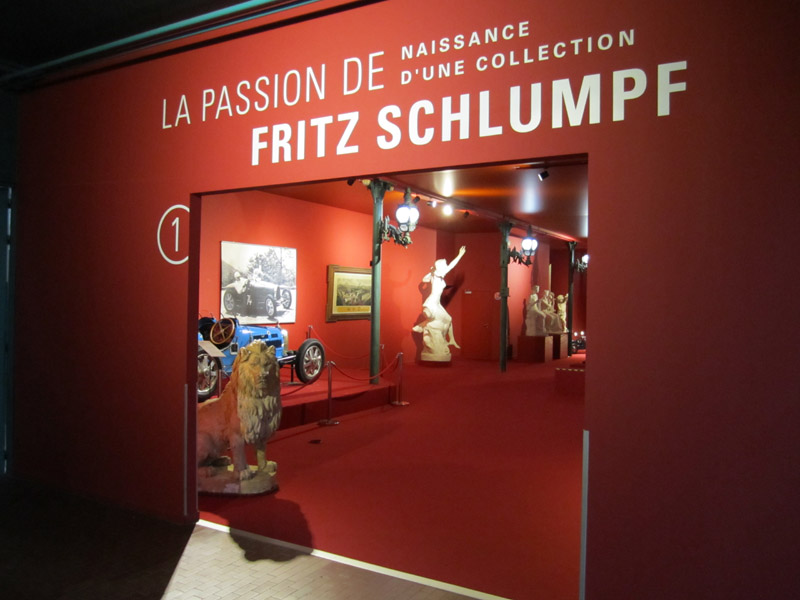
-
Administrator

The first car on display in this smaller room is the car that started it all. This is Fritz Schlumpf's Type 35B. This is far form being the most impressive, or even most valuable car here. But its significance to the rest of the collection means it commands a special place.
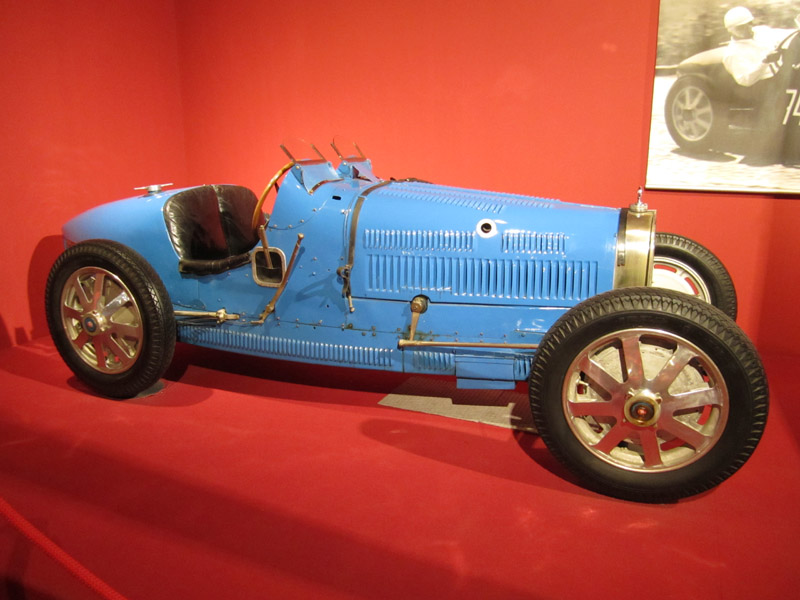
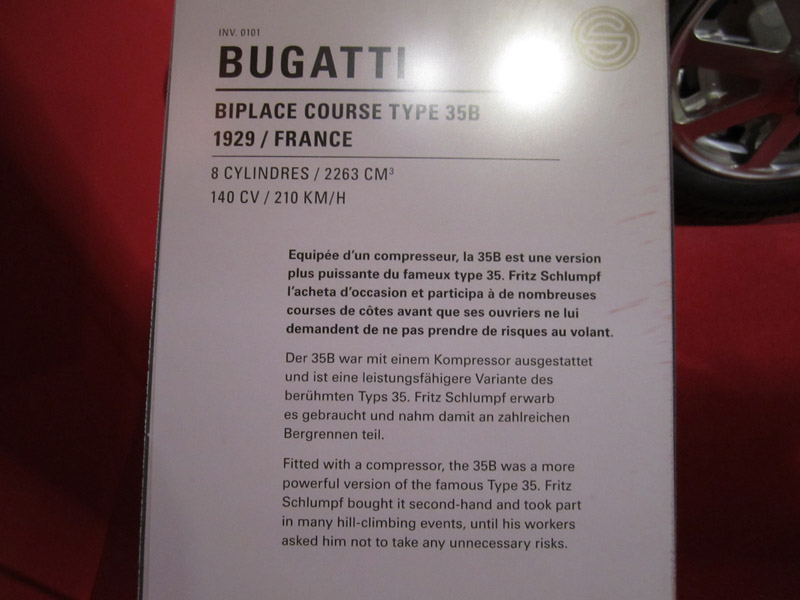
-
Administrator

-
Administrator

-
Administrator

Note the photo on display between these genuine Bugatti 1/2 scale Type 52s. This is is Jeanne Schlumpf, mother of Hans and Fritz. Her sons were devoted to her and dedicated the collection to her.
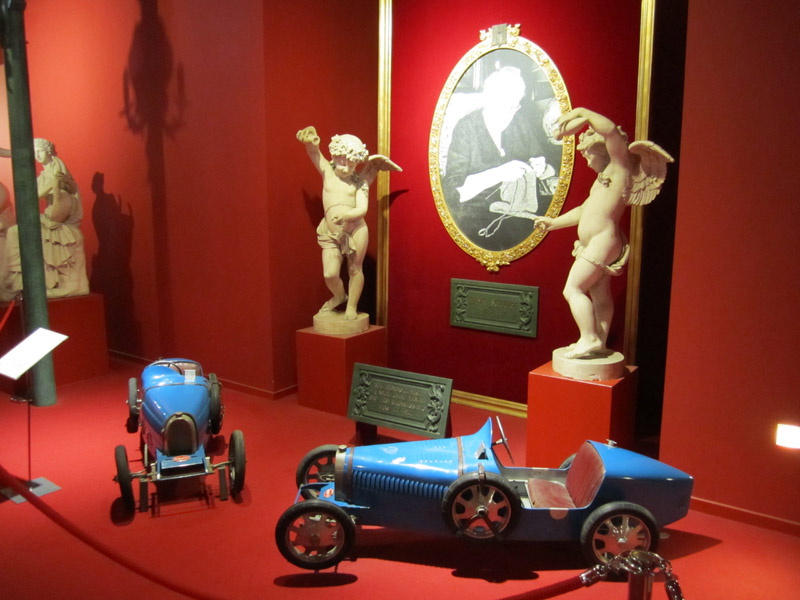
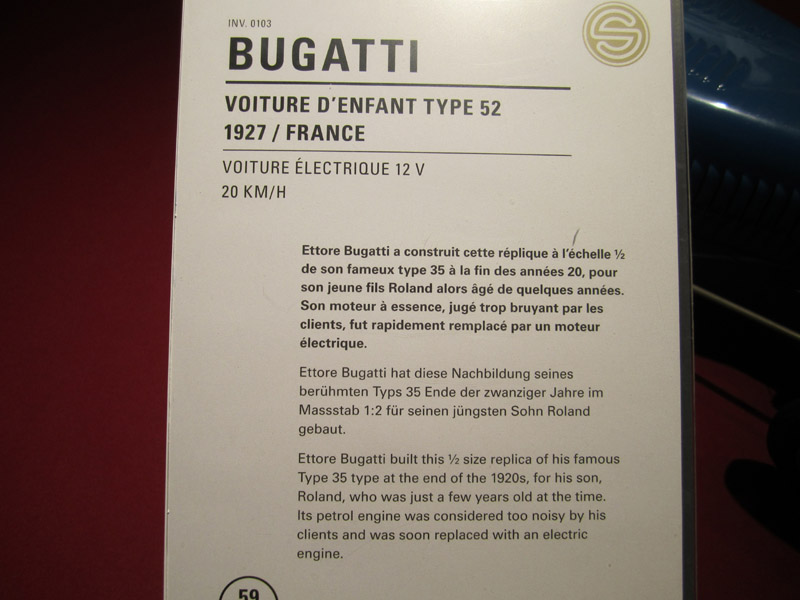
-
Administrator

-
Administrator

-
Administrator

Back into the main hall now. The layout of the museum, as mentioned, features several perfect straight rows with red tiled flooring, gravel display floors, and the beautiful lamp posts. Upon entry, the vehicles are displayed from oldest at left, getting ever more modern with each row.
However, there are a couple of very special sections. To the left, and next door to the Fritz Schlumpf room, is another very special room in which the most significant road cars in the collection are on display, including the two Royale's. At the extreme right is a section dedicated to racing cars. But I begin my journey in the main hall.
Admittedly, my knowledge of veteran cars is limited, and I didn't really know what I was looking at. Regardless, the following is an assortment of what I photographed:
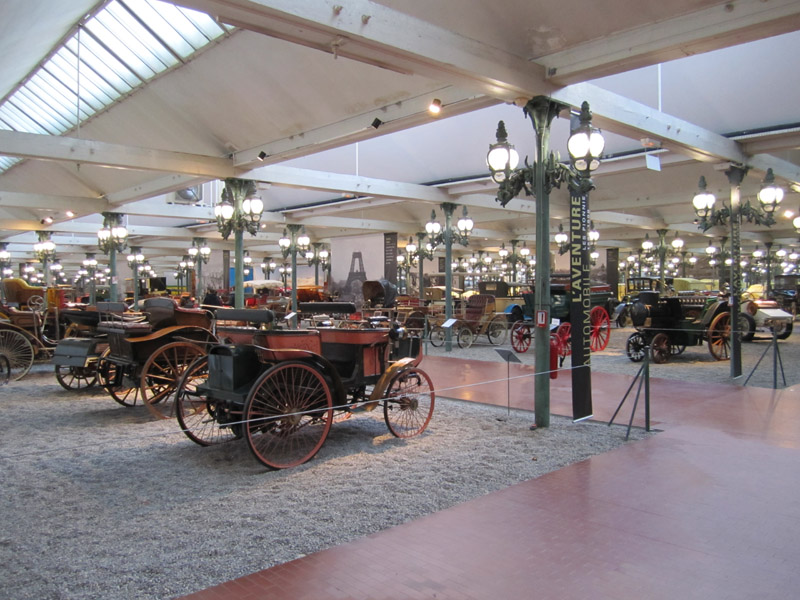
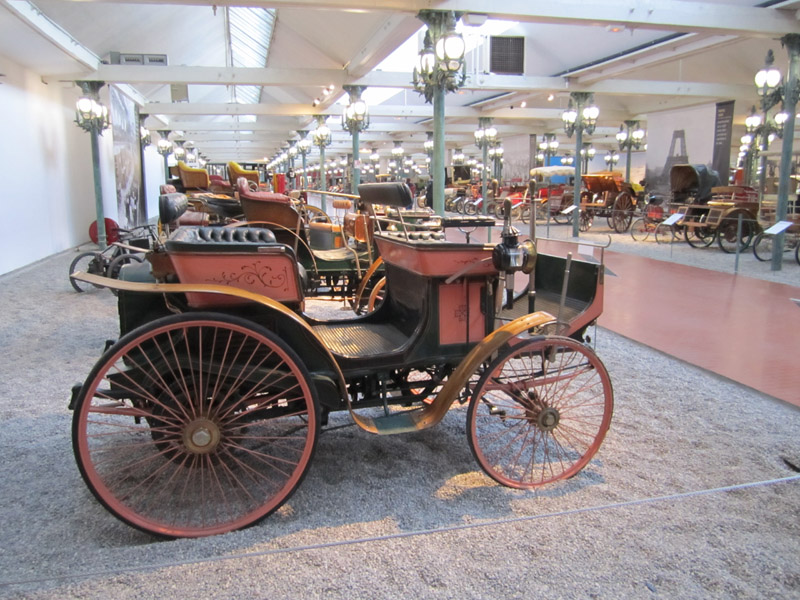
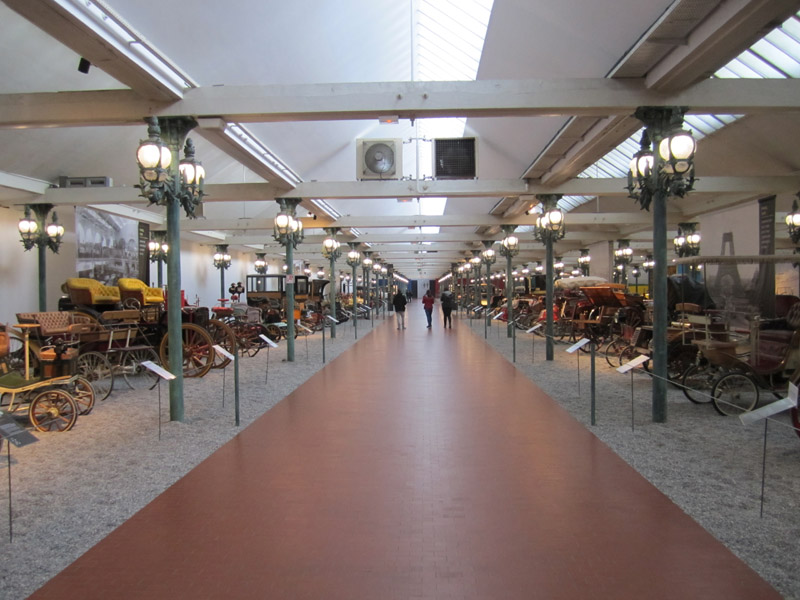
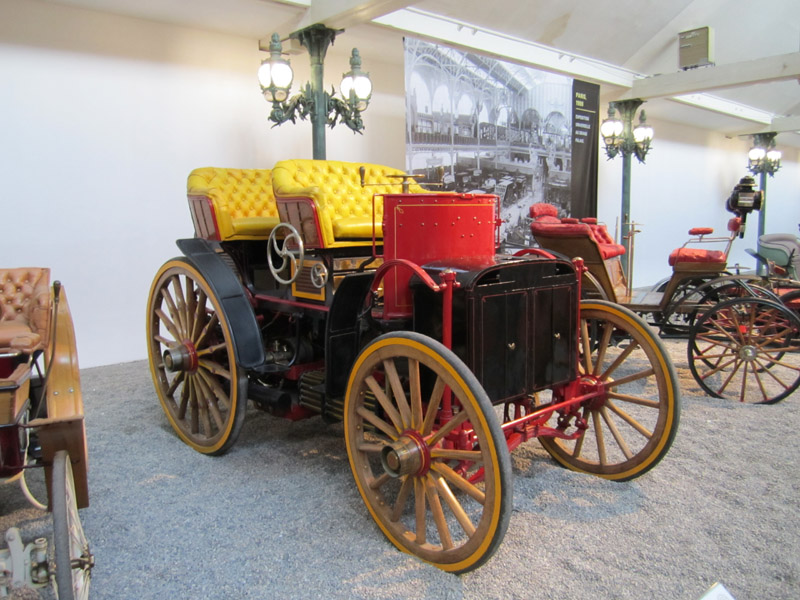
-
Administrator

-
Administrator

-
Administrator

 Posting Permissions
Posting Permissions
- You may not post new threads
- You may not post replies
- You may not post attachments
- You may not edit your posts
-
Forum Rules




 Reply With Quote
Reply With Quote